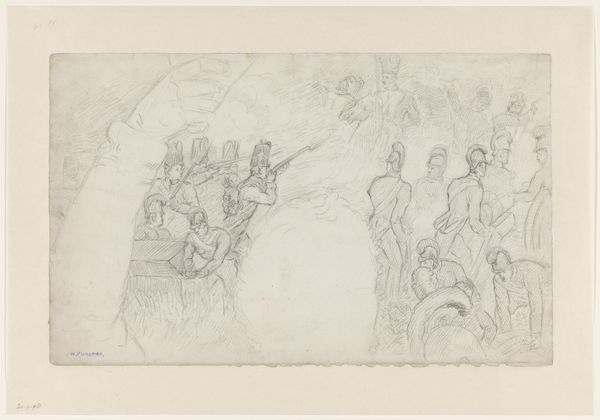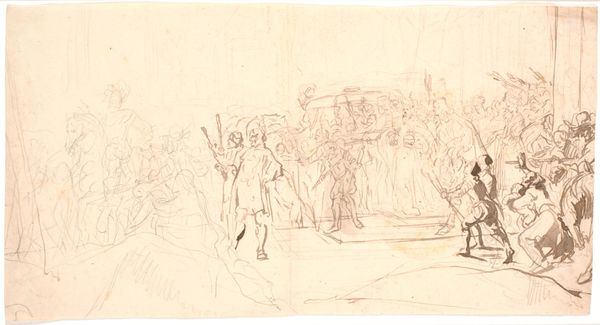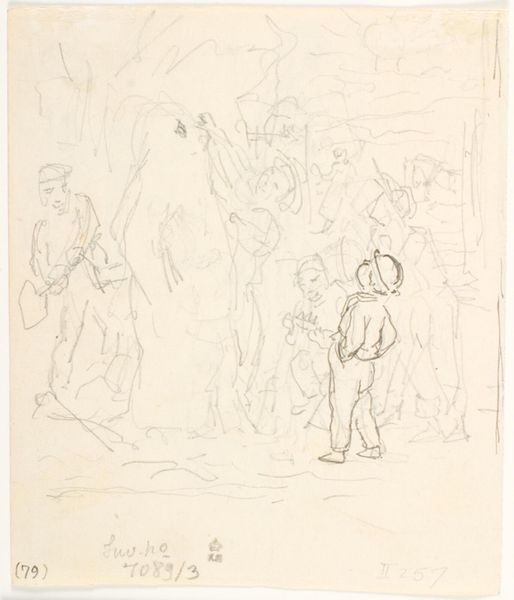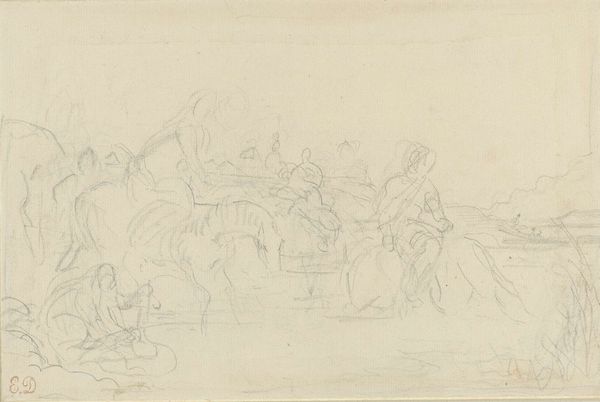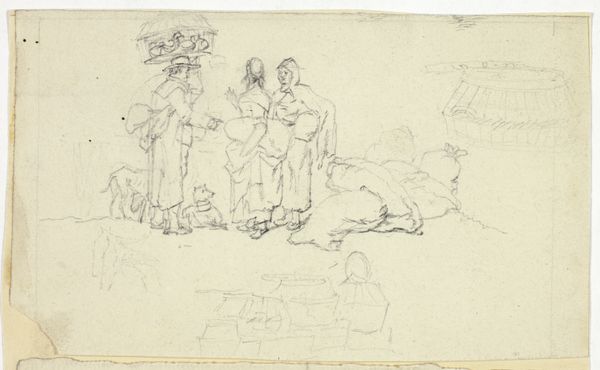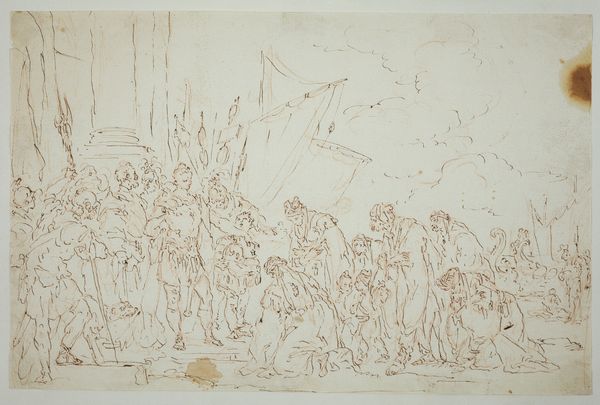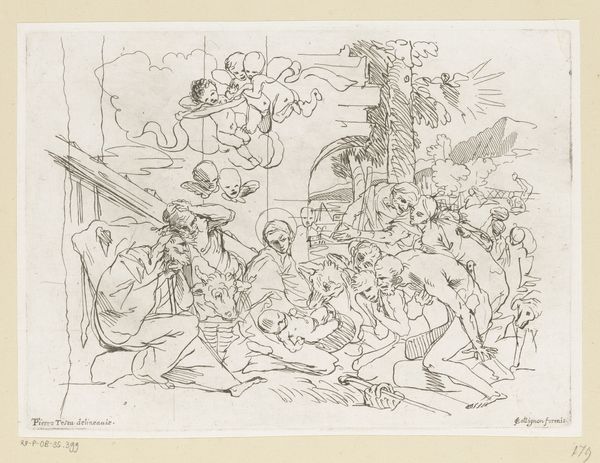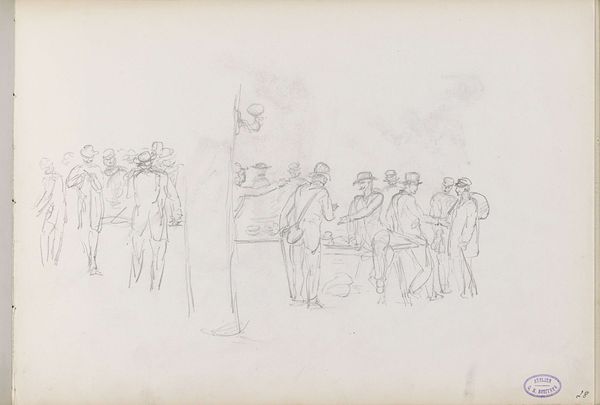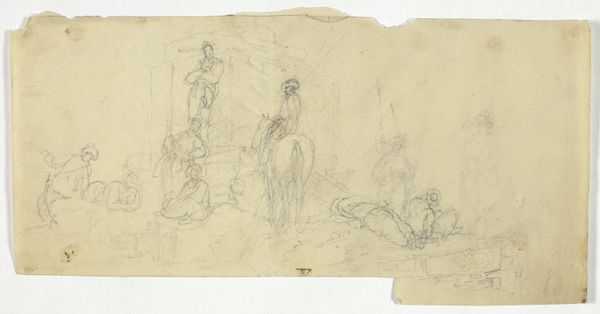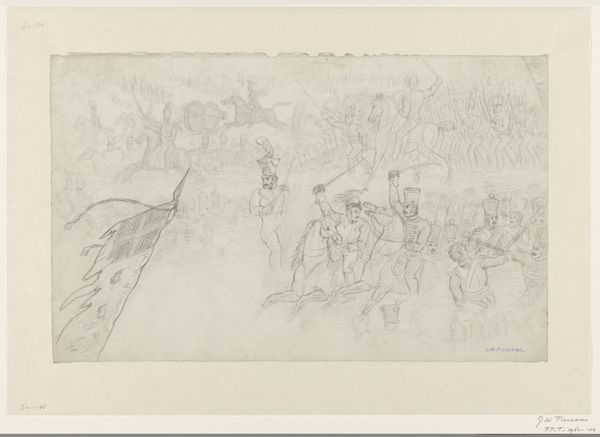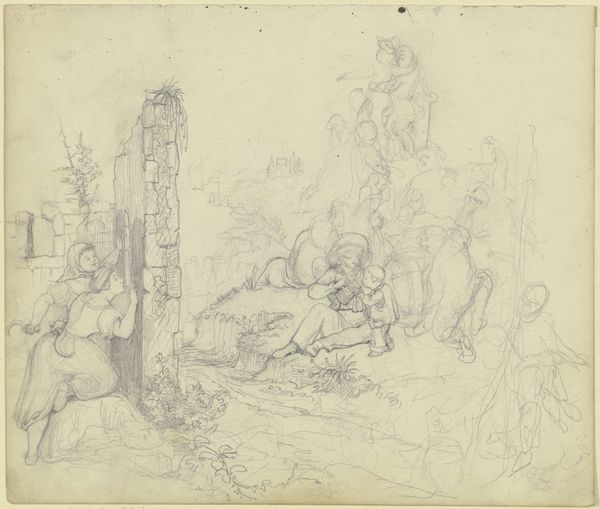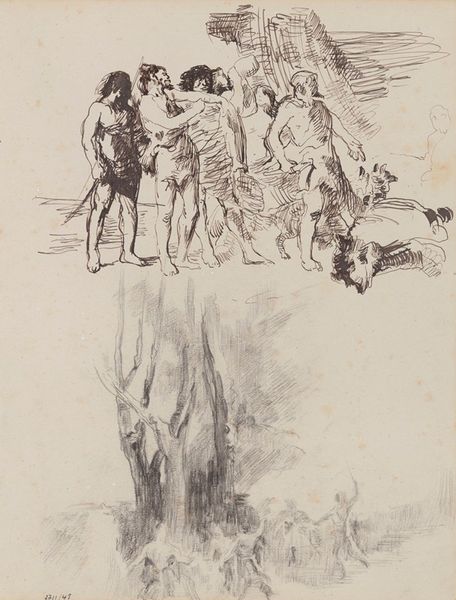
drawing, pencil
#
portrait
#
drawing
#
impressionism
#
pen sketch
#
pencil
Copyright: Public Domain: Artvee
Editor: So, this drawing is "Chinese vaas en figuren" by James Ensor, made sometime between 1880 and 1885. It’s a pencil sketch, kind of faded now. I notice these ghostly figures emerging from what seems like a dreamscape, with a strong oriental-inspired element on the side. What catches your eye? Curator: The oriental vase immediately resonates as a vessel brimming with cultural narratives, almost a repository of collective memory for Ensor and his contemporaries. Beyond the literal depiction, vases often symbolize domesticity, ritual, and, importantly, cultural exchange. The parade of figures gives a strange, dream-like aspect to it. Do you think they relate? Editor: Perhaps they represent imagined histories inspired by the vase, like stories it could tell? What strikes me as strange is that their faces seem… obscured, like masks, although you can see this face quite prominently on the lower-center! Curator: Exactly. The masking could hint at deeper anxieties regarding cultural appropriation or a critique of societal performances. Think about what "Chinoiserie" meant to the European upper-classes then - and perhaps Ensor's comment on their taste for exotic objects. Is Ensor playfully engaging with this tradition or perhaps challenging its inherent power dynamics? What feeling do you get from this work? Editor: I think I feel a slightly mocking tone from Ensor about this craze and the theatrical aspect of adopting foreign customs, or simply all the different masks we all wear in society every day. Curator: Indeed! So many images seem to play off of one another here and against the main symbol. Each figure hints at a concealed identity or role. A symbol not merely absorbed, but actively questioned and reinterpreted. Editor: So, seeing it that way, Ensor almost hints at cultural continuity, memory, identity, and our own roles every day, viewed through that lens of orientalism and symbolism! I have a completely different understanding of this work now.
Comments
No comments
Be the first to comment and join the conversation on the ultimate creative platform.


